Bronze: An Overview
Bronze is a metal alloy composed primarily of copper and tin, along with other elements such as aluminum, manganese, or phosphorus. It has been used for thousands of years and played a crucial role in the development of human civilization. Bronze is known for its strength, durability, and resistance to corrosion, making it suitable for a wide range of applications.
Chemical Composition
The typical composition of bronze is about 88% copper and 12% tin. The addition of tin to copper creates a stronger and harder metal than pure copper. Other elements may be added in varying amounts to further enhance specific properties of the bronze alloy.
Historical Significance
Bronze was widely used during the Bronze Age (3300–1200 BCE) for making tools, weapons, and artwork. Its introduction marked a significant advancement in human technological development, leading to the emergence of complex societies and the spread of civilization.
Properties of Bronze
Bronze exhibits several important properties that make it valuable for various applications:
- Strength: Bronze is stronger than copper and less brittle than iron, making it suitable for casting and forging into different shapes.
- Durability: It has excellent resistance to corrosion, making it ideal for outdoor sculptures, architectural elements, and marine applications.
- Malleability: Bronze can be easily molded and shaped without losing its strength, allowing for intricate designs and detailed artwork.
- Conductivity: While not as conductive as pure copper, bronze still retains good electrical and thermal conductivity, making it useful for electrical connectors and heat exchangers.
Uses of Bronze
Bronze continues to be used in a variety of modern applications, including:
- Art and sculpture
- Coins and medals
- Marine equipment and propellers
- Musical instruments
- Architectural elements
- Industrial machinery and bearings
Study Guide
If you're studying bronze, here are some key points to focus on:
- Understand the chemical composition of bronze and how the addition of tin affects its properties.
- Learn about the historical significance of bronze and its role in the development of human civilization.
- Explore the properties of bronze and how they make it suitable for various applications.
- Research the modern uses of bronze and its continued relevance in today's world.
Additionally, it may be helpful to study specific examples of bronze artifacts, sculptures, or applications to gain a deeper understanding of its significance and versatility.
[Bronze] Related Worksheets and Study Guides:
.◂Biology Worksheets and Study Guides High School. Invertebrates
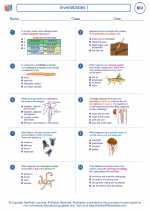
 Worksheet/Answer key
Worksheet/Answer key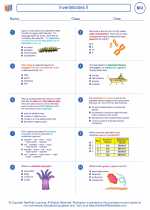
 Worksheet/Answer key
Worksheet/Answer key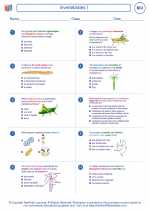
 Worksheet/Answer key
Worksheet/Answer key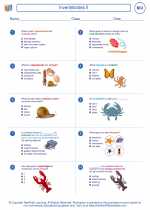
 Worksheet/Answer key
Worksheet/Answer key
 Worksheet/Answer key
Worksheet/Answer key
 Vocabulary/Answer key
Vocabulary/Answer key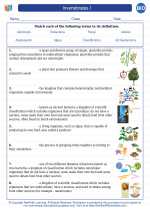
 Vocabulary/Answer key
Vocabulary/Answer key
 Vocabulary/Answer key
Vocabulary/Answer key
